Earbuds have become a common accessory for many people. They let us enjoy music and podcasts on the go. But using them at high volumes can harm our ears.
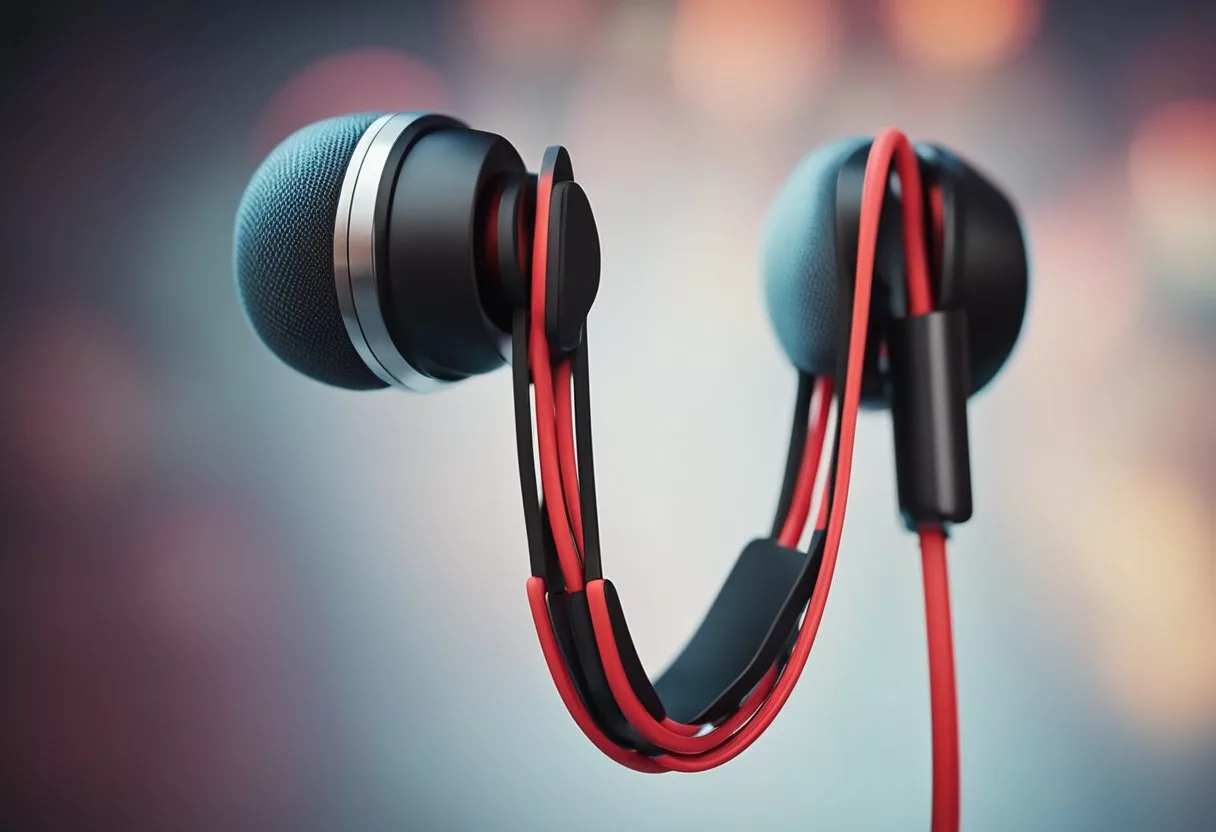
Constant exposure to loud sounds through earbuds can damage the delicate structures in our inner ears. This can lead to hearing loss over time. The risk goes up when we turn up the volume and listen for long periods.
Our ears are sensitive organs. They need care and protection. By understanding how earbuds affect our hearing, we can make smarter choices about our listening habits.
Key Takeaways
- Loud volumes from earbuds can harm inner ear structures
- Long listening times increase the risk of hearing damage
- Safe listening habits protect ear health and prevent hearing loss
The Science of Sound in the Ear
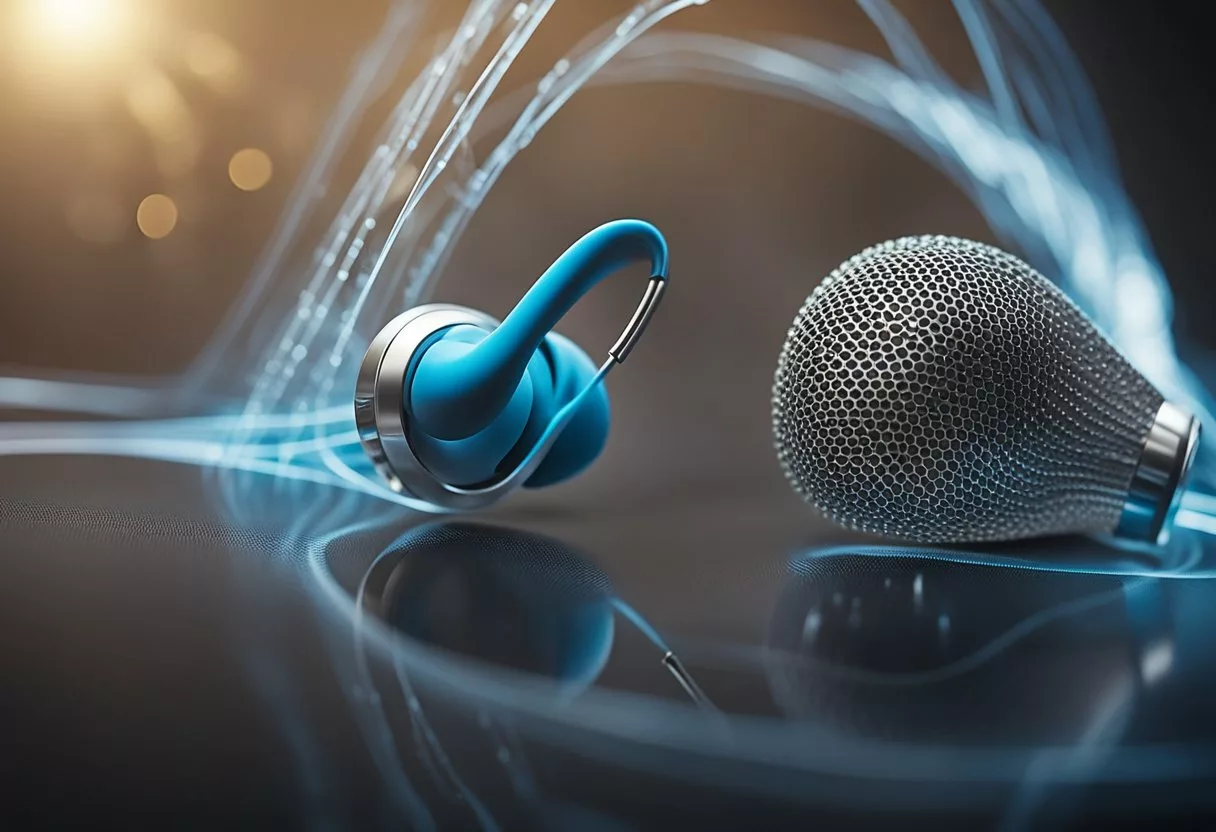
Sound travels through the ear in a complex process. It starts as waves and ends up as signals in the brain. Let’s explore how this happens.
Understanding Sound Waves
Sound waves are vibrations that move through the air. They have different pitches and volumes. High-pitched sounds have short, fast waves. Low-pitched sounds have long, slow waves.
When sound waves enter the ear canal, they funnel toward the eardrum. The ear canal acts like a tunnel. It guides the waves to their destination.
Sound can be measured in decibels (dB). Normal talking is about 60 dB. Loud music can reach 100 dB or more. At high volumes, sound waves are stronger. This can put stress on the ear’s parts.
Anatomy of the Ear
The ear has three main parts: outer, middle, and inner ear. The outer ear catches sound waves. The eardrum sits at the end of the ear canal. It’s a thin piece of tissue that vibrates when sound hits it.
Behind the eardrum is the middle ear. It has tiny bones that amplify sound vibrations. These bones connect to the inner ear.
The inner ear turns vibrations into electrical signals. It contains fluid and tiny hair cells. These cells are sensitive to movement. When sound waves make them move, they send signals to the brain.
Loud sounds can damage these delicate parts. This is why using earbuds at high volumes can be risky.
Audiology and Hearing Health
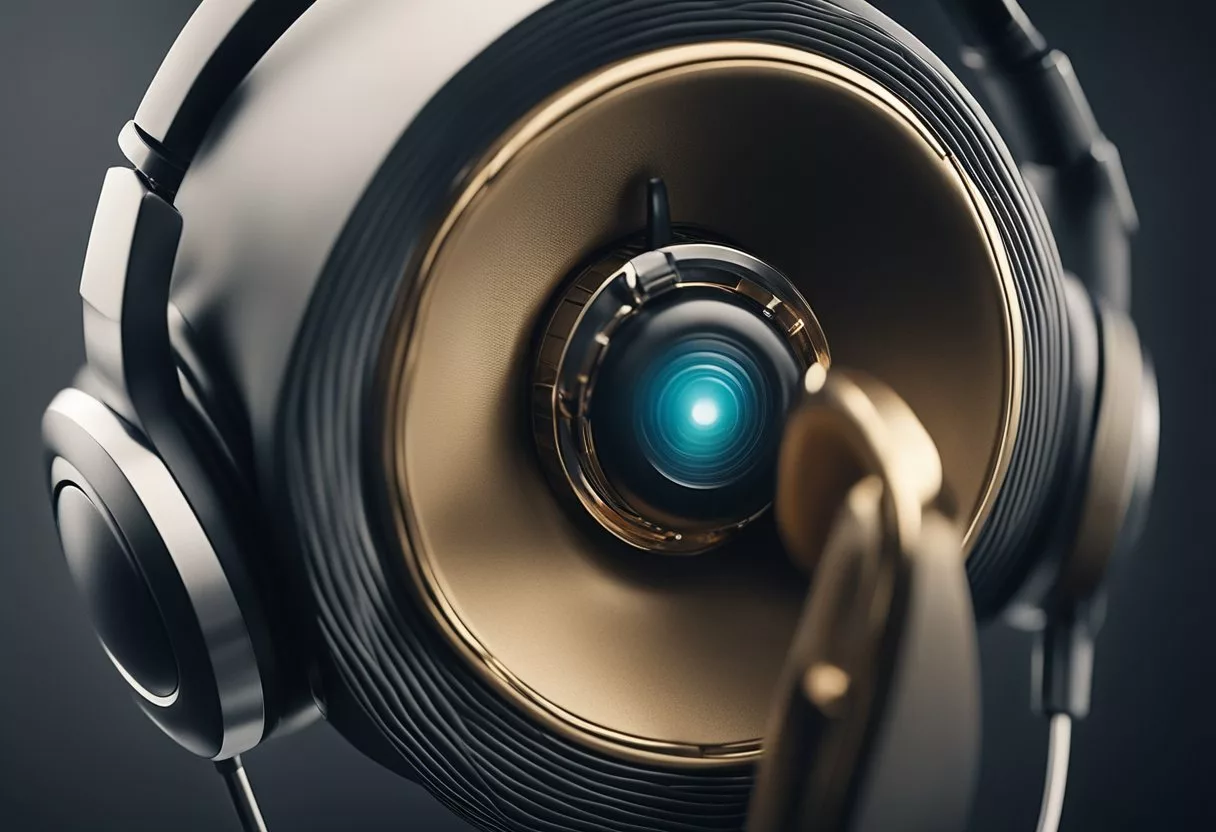
Audiologists play a key role in detecting and treating hearing issues. Hearing damage can occur from loud noises, including high-volume earbud use.
Role of an Audiologist
An audiologist is a hearing health expert. They test hearing and balance. Audiologists also fit hearing aids and offer ways to protect hearing.
These professionals use special tools to check ear health. They can spot early signs of hearing loss. Audiologists help people of all ages with ear problems.
They create treatment plans for hearing issues. This may include hearing aids or other devices. Audiologists also teach people how to protect their ears from loud noises.
Signs of Hearing Damage
Ringing in the ears is a common sign of hearing damage. This is also called tinnitus. It can happen after being around loud noises.
Trouble hearing in noisy places is another sign. People might ask others to repeat themselves often. Some may turn up the TV or radio volume very high.
Feeling like sounds are muffled is a warning sign. This can happen right after loud noise exposure. If it lasts, it could mean permanent damage.
Pain in the ears after loud noise is serious. It means the ears were exposed to harmful sound levels. Anyone with these symptoms should see an audiologist soon.
Risks of Loud Noise and Earbuds
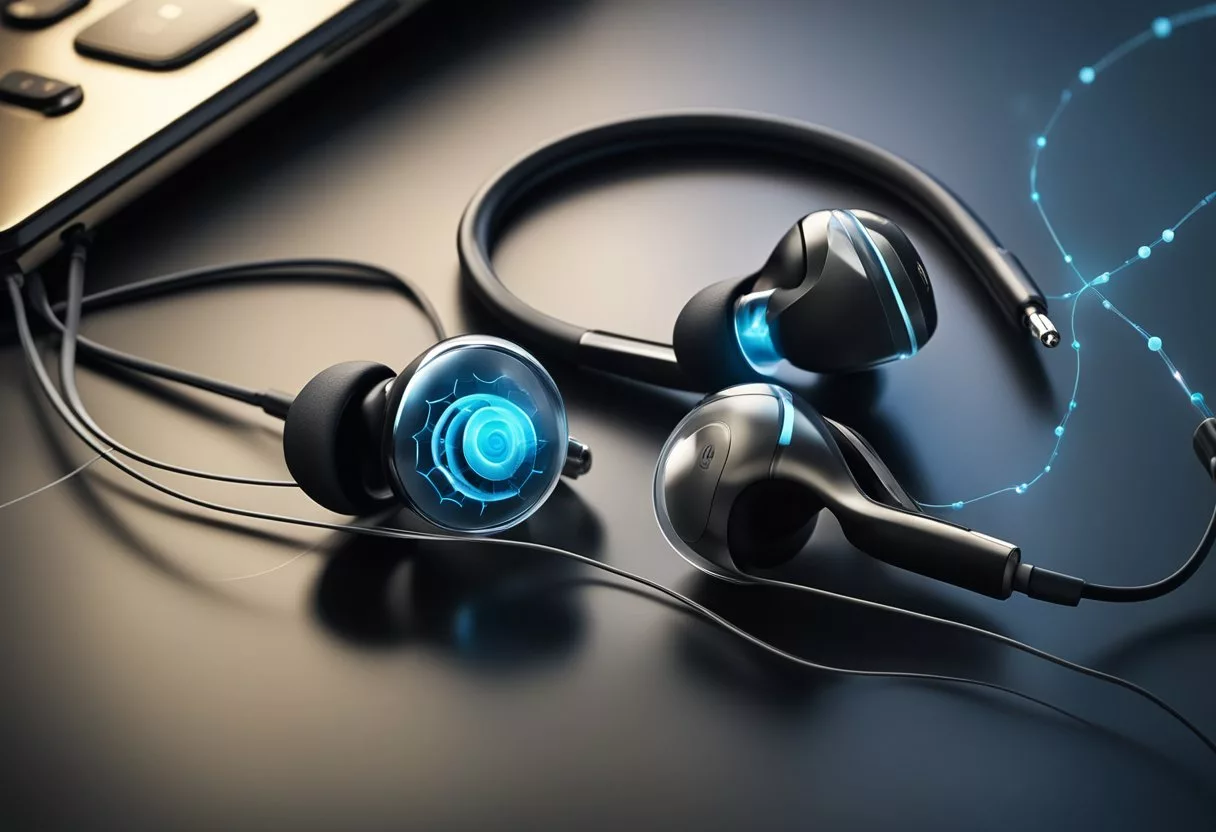
Loud noise and earbuds can damage your ears in serious ways. Extended use of earbuds at high volumes puts your hearing at risk.
Noise-Induced Hearing Loss
Noise-induced hearing loss happens when loud sounds harm the inner ear. Listening to iPods at high volume levels for long periods can cause this problem. The tiny hair cells in your ear get damaged by intense sound waves.
This damage builds up over time. At first, you might not notice any issues. But after months or years of loud earbud use, hearing loss can become permanent.
Some signs of hearing damage include:
• Ringing or buzzing in your ears • Trouble hearing soft sounds • Difficulty understanding speech in noisy places
Impact of Loud Music on the Ear
Loud music through earbuds can harm different parts of your ear. The eardrum may stretch too much from powerful sound waves. This can cause pain and in rare cases, the eardrum might tear.
Personal audio systems put users at great risk when used improperly. Many people turn up the volume to block outside noise. But this habit is dangerous for ear health.
Earbuds sit close to the eardrum, making loud sounds even more harmful. Over time, this can lead to:
• Tinnitus (constant ringing in the ears) • Reduced ability to hear high-pitched sounds • Difficulty hearing in crowded or noisy settings
Decibel Levels and Safe Listening
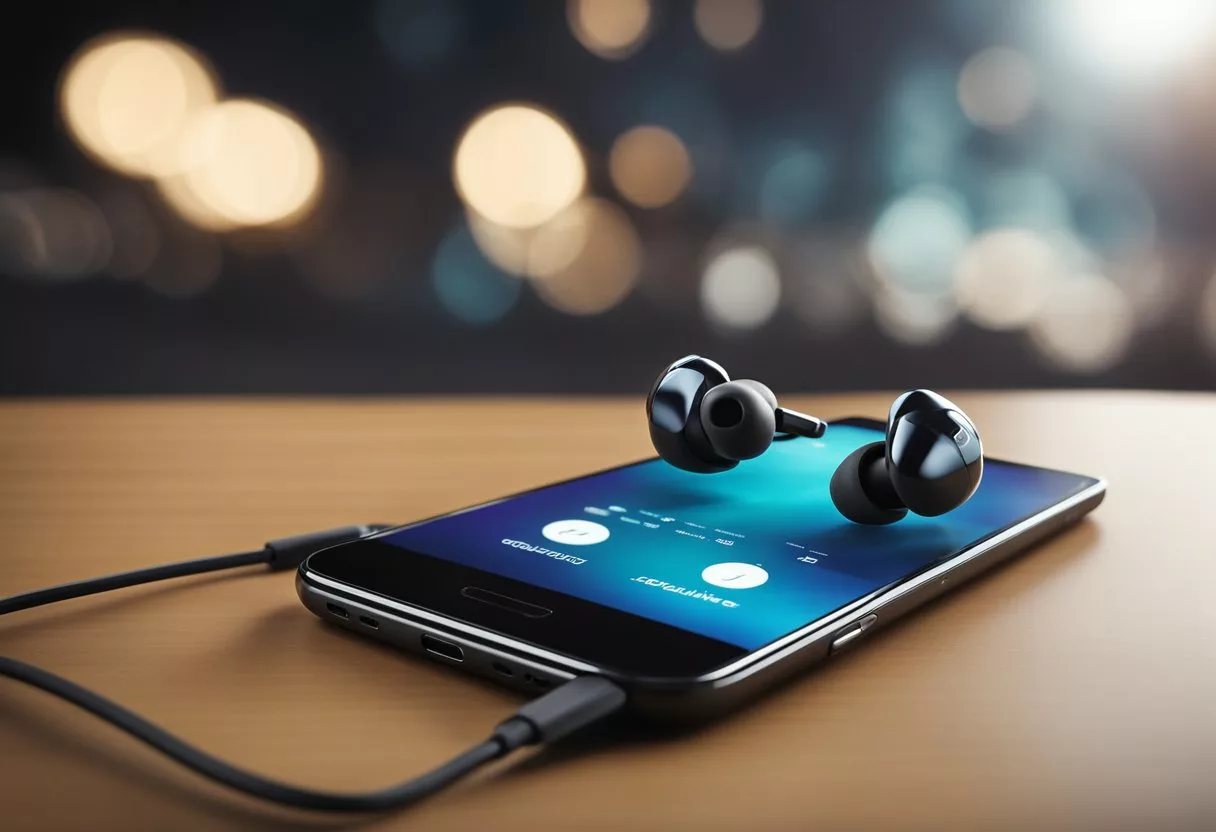
Loud volumes from earbuds can harm your hearing. Knowing safe decibel levels helps protect your ears.
What Are Decibels?
Decibels (dB) measure sound intensity. The scale starts at 0 dB, which is near total silence. Normal talking is about 60 dB.
A whisper is around 30 dB. City traffic noise reaches 80-85 dB. Rock concerts often exceed 100 dB.
The decibel scale is not linear. A 10 dB increase doubles the perceived loudness. This means 80 dB sounds twice as loud as 70 dB.
Safe Volume Levels
Experts say 85 dB is the highest safe noise level for extended periods. Above this can damage hearing over time.
At 85 dB, listening should be limited to 8 hours per day. For every 3 dB increase, safe listening time is cut in half.
- 88 dB: 4 hours
- 91 dB: 2 hours
- 94 dB: 1 hour
- 97 dB: 30 minutes
Many earbuds can reach 100 dB or higher at full volume. At this level, hearing damage can occur in just 15 minutes.
To protect hearing, keep earbud volume below 60% of maximum. Take regular breaks from listening. Use noise-cancelling headphones to avoid turning up volume in noisy places.
Children and Young Adults: Vulnerabilities to Loud Sound
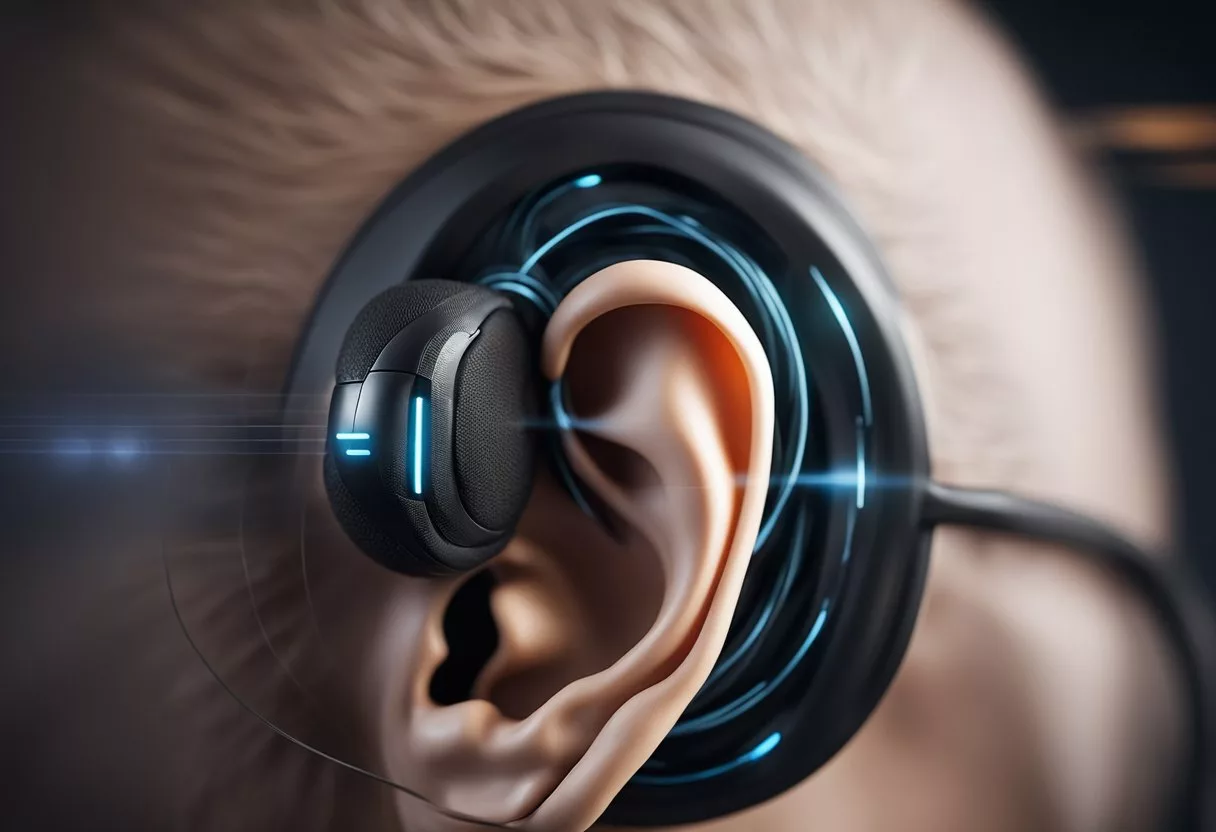
Children and young adults face unique risks from loud sounds. Their developing ears are more sensitive to damage from high volumes. Listening habits also play a key role in protecting hearing.
Child Hearing Protection
Children’s ears are more vulnerable to noise damage than adults’. Their ear canals are smaller, which amplifies sounds. The hair cells in a child’s inner ear are also more fragile.
Parents should set volume limits on devices. Many smartphones and music players have built-in options to cap volume levels. Special headphones for kids often include this feature too.
Experts recommend the 60/60 rule for children:
- Listen at 60% of max volume
- Limit listening time to 60 minutes per day
Regular hearing tests are important. They can catch early signs of damage before it becomes severe.
Young Adult Listening Habits
Young adults often listen to music at dangerously high volumes. Many use earbuds for hours each day. This puts them at high risk for hearing loss.
Common risky behaviors include:
- Turning up volume to block outside noise
- Falling asleep with earbuds in
- Attending loud concerts without ear protection
Education is key. Young adults should learn about safe listening levels. The World Health Organization suggests keeping volume below 85 decibels.
Using noise-cancelling headphones can help. They block outside sounds, reducing the need to turn up volume. Over-ear headphones are also safer than in-ear models.
Types of Listening Devices
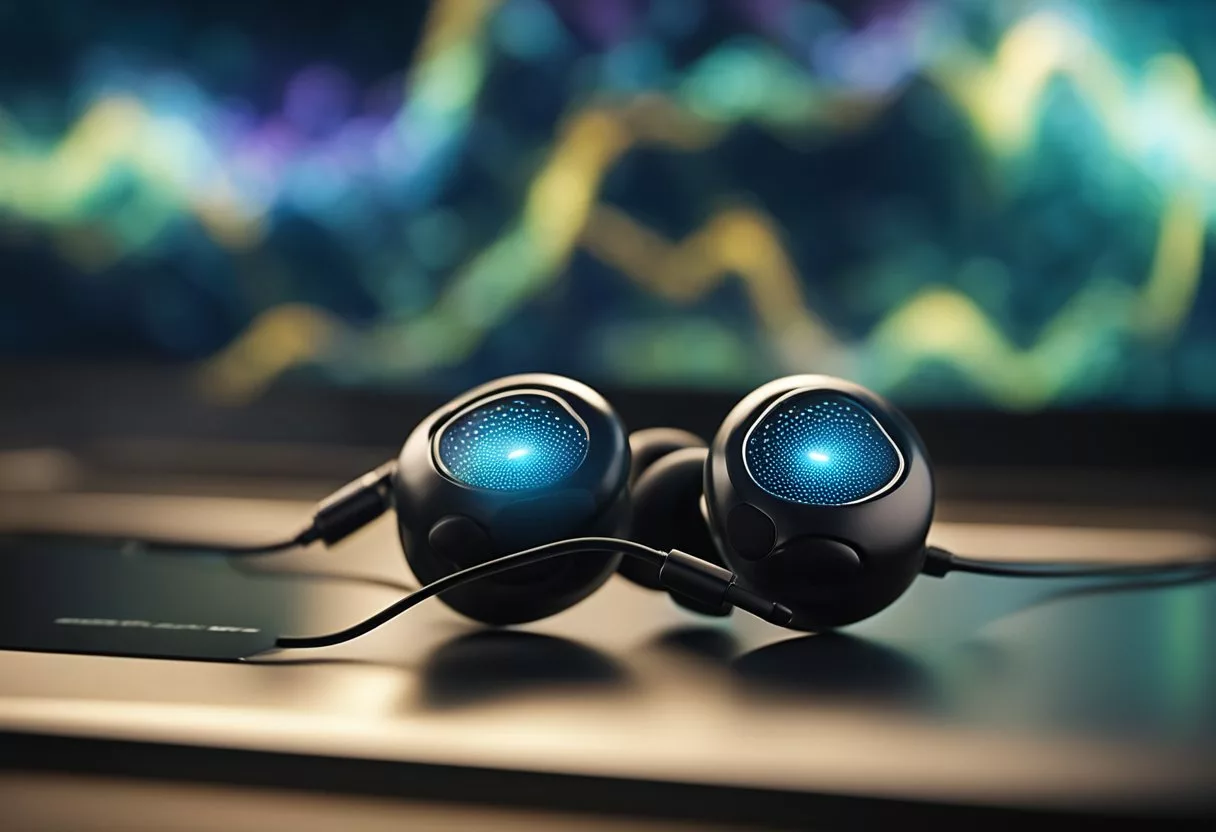
Listening devices come in various shapes and sizes. They range from small earbuds to large professional headphones. Each type has unique features that affect sound quality and ear health.
Personal vs. Professional Audio Devices
Personal listening devices are made for everyday use. They include smartphones, MP3 players, and tablets. These devices often come with earbuds or small headphones.
Professional audio devices are used in music studios and by sound engineers. They have better sound quality and more precise volume control. These devices usually work with larger, more powerful headphones.
The main difference is sound output. Professional devices can produce louder volumes safely. Personal devices may lack advanced safety features.
Over-Ear Versus In-Ear Headphones
Over-ear headphones cover the entire ear. They provide good sound isolation and comfort for long listening sessions. These headphones often have larger drivers, creating a fuller sound.
In-ear headphones, or earbuds, fit inside the ear canal. They are small, portable, and convenient. However, they can potentially cause more harm to hearing if used improperly.
Earbuds may amplify sound more than over-ear headphones. This is due to their position close to the eardrum. Over-ear headphones spread sound over a larger area, which can be safer for the ears.
Both types can cause hearing damage if used at high volumes for long periods. It’s important to monitor volume levels and take listening breaks regardless of headphone type.
Regulating Volume and Noise Exposure
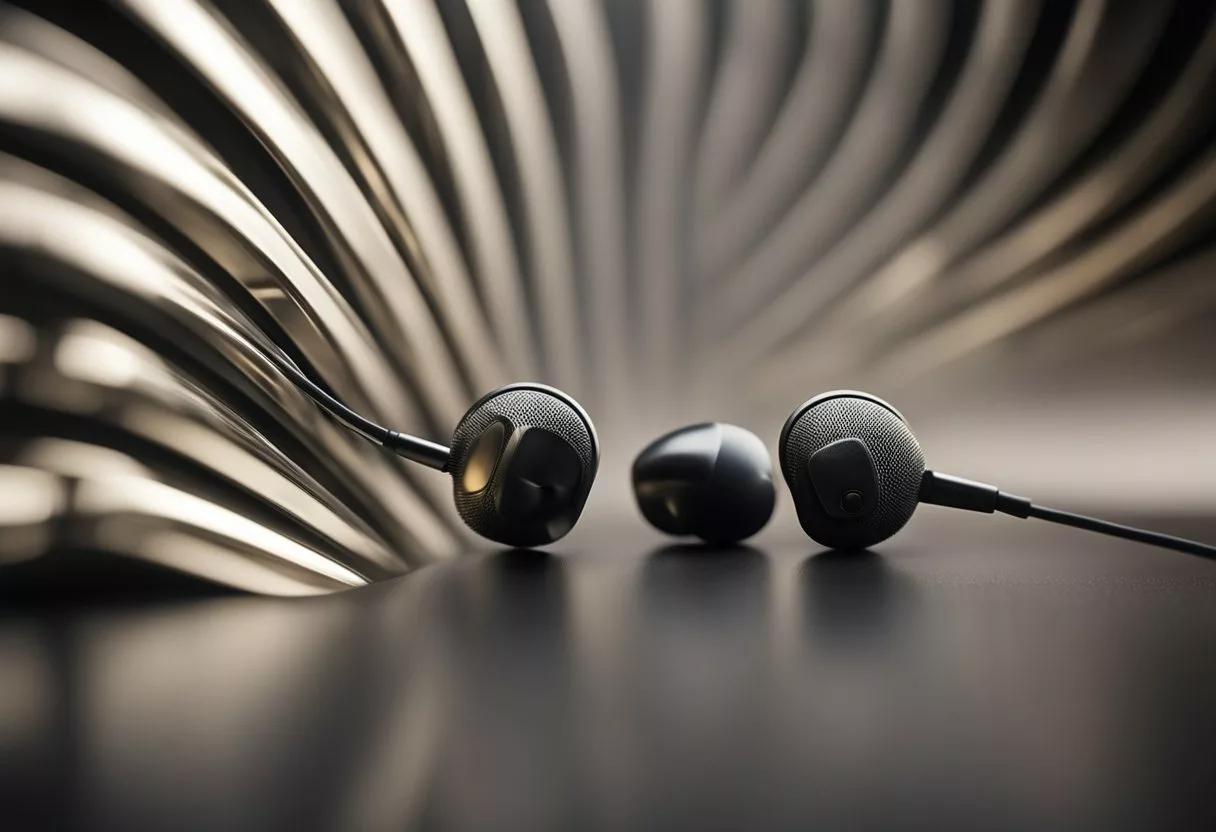
Modern earbud technology offers ways to protect hearing while enjoying audio. Volume control and noise-canceling features help limit excessive sound exposure.
Volume Control Technologies
Many devices now have built-in volume limiters to prevent audio from getting too loud. These caps typically max out around 85 decibels, which is considered safe for up to 8 hours of listening per day.
Some earbuds use smart volume control that adjusts based on outside noise. This helps users avoid turning up the volume too high in noisy places.
Volume-limiting headphones are great for kids. Parents can set maximum volumes that can’t be overridden. This stops children from accidentally damaging their hearing.
Noise-Canceling Features
Noise-canceling earbuds reduce background sounds. This lets users listen at lower, safer volumes even in loud settings.
Active noise cancellation uses microphones to detect outside noises. It then creates sound waves to cancel them out. This works best for steady, low-frequency sounds like airplane engines.
Passive noise cancellation uses physical barriers to block sound. Foam or silicone eartips create a seal in the ear canal. This muffles outside noise without any power needed.
Both types let users hear music clearly at lower volumes. This cuts down on the need to crank up the sound to unsafe levels.
Preventing Hearing Loss and Promoting Ear Health
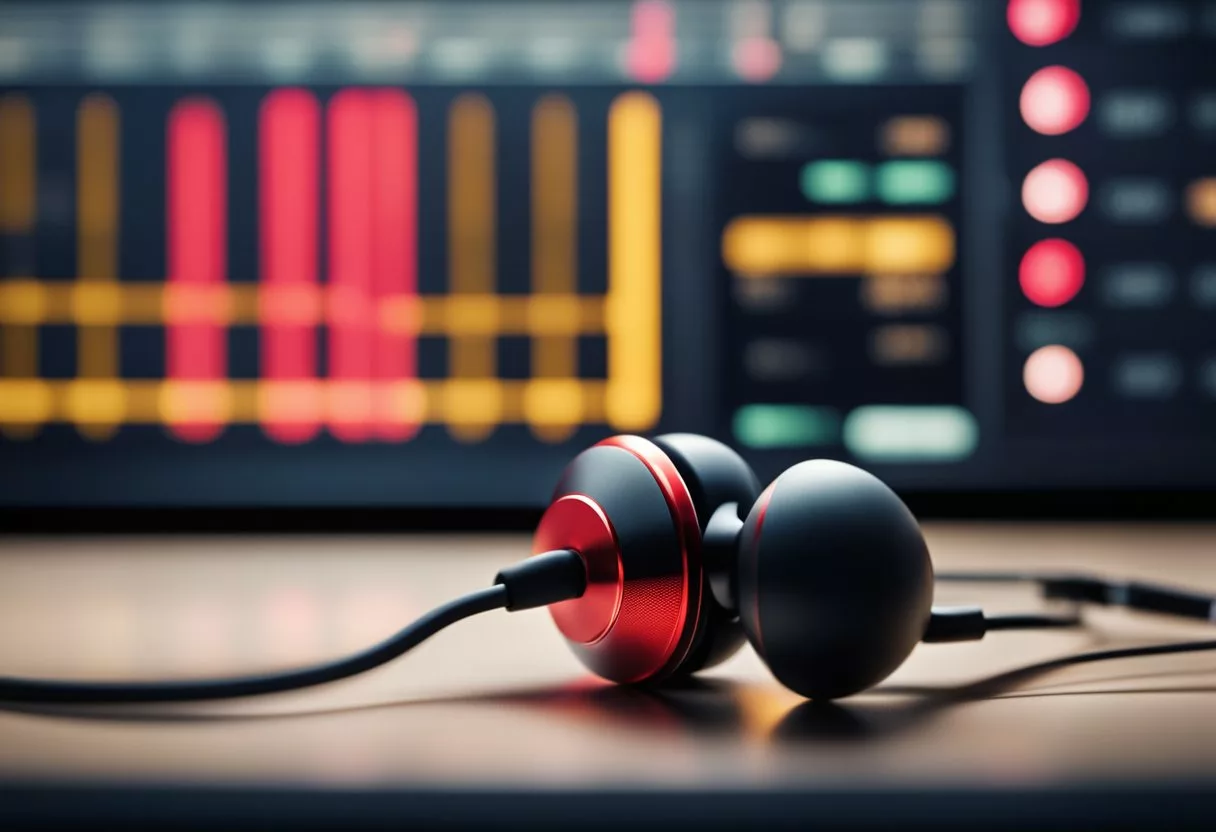
Protecting your ears from loud sounds is key to keeping your hearing healthy. There are simple steps you can take to lower your risk of hearing damage.
Healthy Listening Habits
Turn down the volume when using earbuds. Keep it at 60% or less of the max level. Take breaks every hour to give your ears rest.
Limit how long you listen each day. Try not to use earbuds for more than 1-2 hours total. Switch to speakers when you can.
Be aware of warning signs. If your ears feel full or ring after listening, the volume was too high. If voices sound muffled, that’s another red flag.
Choose noise-cancelling headphones. They block outside sounds so you can listen at lower volumes. Over-ear styles are better than earbuds for ear health.
Hearing Protection Strategies
Wear earplugs at loud events like concerts or sports games. Foam or silicone plugs can cut noise by 15-30 decibels.
Move away from loud noise sources when possible. Every doubling of distance cuts sound intensity by 75%.
Give your ears time to recover after noise exposure. Avoid more loud sounds for at least 16 hours.
Get your hearing checked regularly. Catch any issues early when they’re easier to treat.
Consider custom-fit earplugs for better protection. An audiologist can make ones that fit your ears perfectly.
Use apps to measure noise levels around you. Many free ones can alert you when sounds get too loud.
Recognizing Hearing Problems

Knowing the signs of hearing issues is key for early treatment. Symptoms can range from ringing in the ears to pain and discomfort.
Symptoms of Tinnitus
Tinnitus is a common sign of hearing damage. It causes ringing, buzzing, or whistling sounds in the ears. These sounds may come and go or be constant.
People with tinnitus often have trouble focusing. They might find it hard to hear in noisy places. Some may feel dizzy or have balance problems.
If you notice these symptoms, see a doctor. An audiologist can test your hearing and suggest treatments.
Addressing Ear Pain and Infections
Ear pain can be a sign of infection or injury. It might feel sharp, dull, or burning. The pain may get worse when you touch your ear.
Other signs of ear infections include:
- Fluid draining from the ear
- Hearing loss
- Fever
- Headache
- Feeling of fullness in the ear
If you have these symptoms, see a doctor right away. They can check for infection and give you the right treatment.
Don’t ignore ear pain. Untreated infections can lead to hearing loss. A doctor can help find the cause and treat it quickly.
Treatment and Management
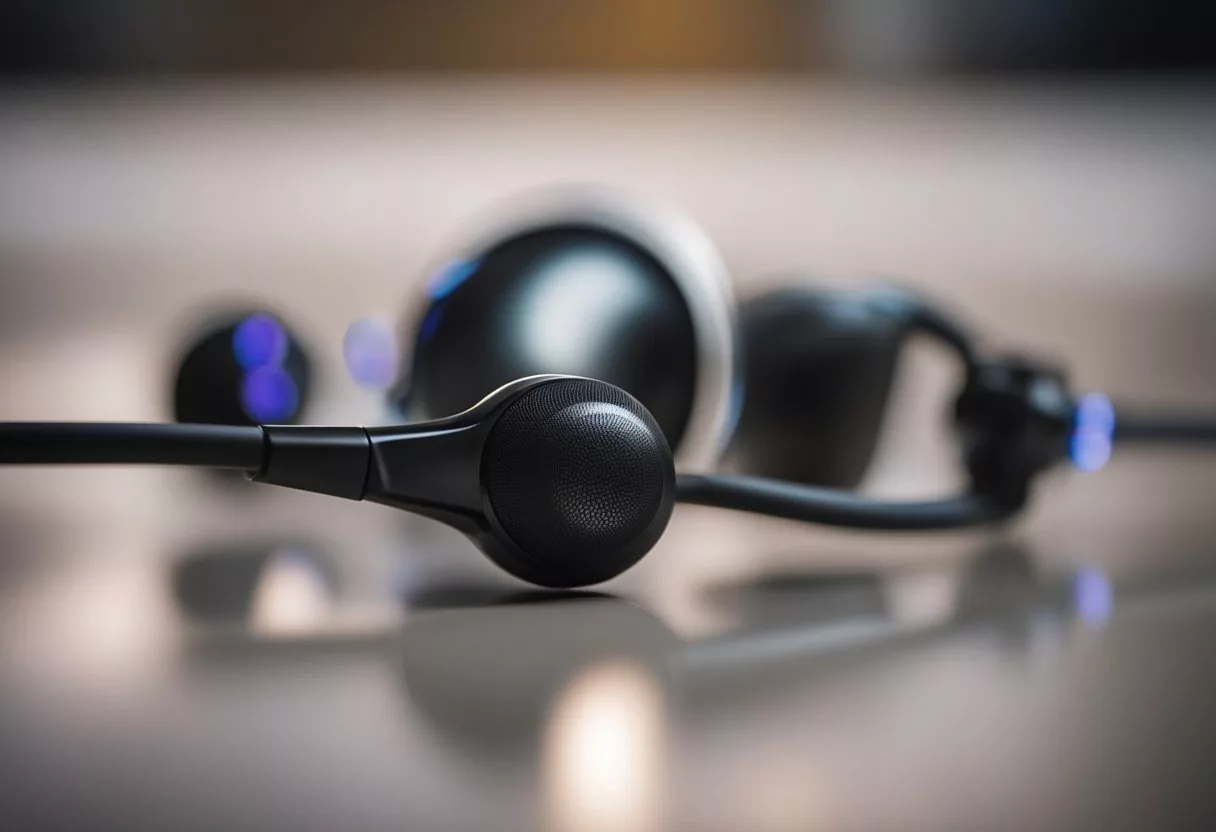
Dealing with ear damage from loud earbud use requires professional help and long-term care. Early action and proper management can slow hearing loss and improve quality of life.
Seeking Professional Help
An audiologist can assess hearing damage and recommend treatments. They may perform tests to check hearing levels and evaluate tinnitus. Based on the results, they can suggest custom solutions.
Treatment options may include:
- Hearing aids to amplify sounds
- Sound therapy devices for tinnitus relief
- Counseling to cope with hearing changes
It’s crucial to see an expert quickly if you notice hearing problems. Early care can prevent further damage.
Managing Long-Term Hearing Conditions
Long-term management focuses on protecting hearing and adapting to changes. Key steps include:
- Using hearing protection in loud settings
- Keeping earbud volume low
- Taking listening breaks
For ongoing tinnitus, sound therapies can help mask the ringing. These may use white noise or nature sounds.
Learning new communication skills can also help. This might mean facing people when they speak or using visual cues.
Regular check-ups with an audiologist are vital. They can track changes and adjust treatments as needed.
Earbud Safety: Best Practices
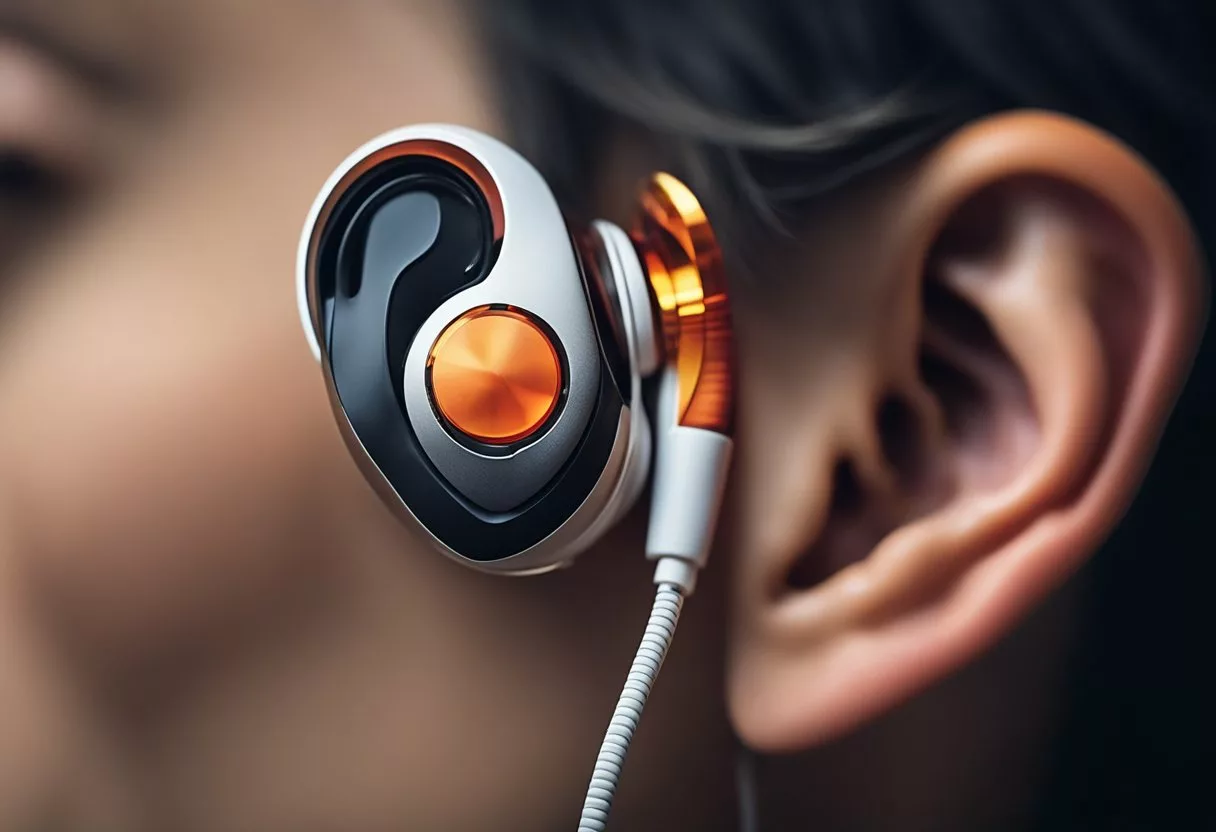
Using earbuds safely involves choosing the right type and managing volume levels. These steps help protect hearing while still enjoying audio.
Choosing the Right Earbuds
Picking good earbuds is key for ear health. Look for models that fit well and block outside noise. This lets you listen at lower volumes.
Some earbuds have noise-canceling features. These can help reduce the need to turn up the volume in noisy places.
Consider earbuds with built-in volume limits. They prevent sound from getting too loud.
Check the earbud’s maximum decibel output. Aim for ones that don’t go above 85 decibels.
Opt for over-ear headphones if possible. They often provide better sound quality at lower volumes.
Understanding Volume Limit Features
Many devices have volume limit settings. Learn how to use these to protect your hearing.
Set a maximum volume level on your device. This stops you from accidentally turning it up too high.
Some smartphones have built-in warnings when volume gets too loud. Don’t ignore these alerts.
Use the 60/60 rule: listen at 60% volume for no more than 60 minutes at a time.
Take breaks between listening sessions. This gives your ears time to rest.
Be extra careful when using earbuds while exercising. People often turn up volume to mask exercise noises.
Remember, even moderate volumes can cause damage over time. Keep your listening habits in check.
Frequently Asked Questions
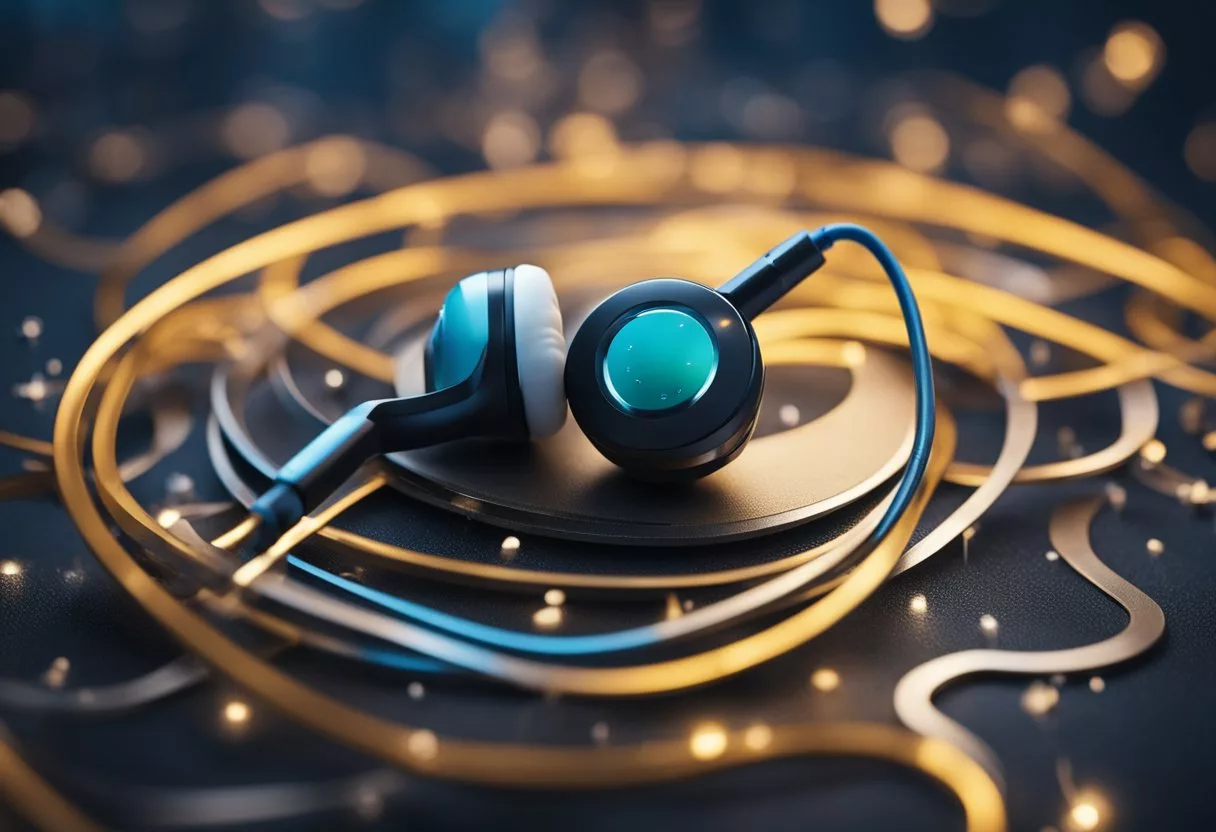
Many people have concerns about earbud use and hearing health. These questions address common worries about volume levels, exposure times, and potential risks.
Can temporary exposure to loud music through earbuds cause permanent hearing damage?
Yes, even brief exposure to very loud music through earbuds can harm hearing. Sudden, intense sounds can damage the delicate structures in the inner ear. This may lead to permanent hearing loss or tinnitus.
What are the safe listening levels in decibels when using earbuds?
Safe listening levels are generally considered to be below 85 decibels. At this volume, a person can listen for up to 8 hours without risk. For every 3 decibel increase above 85, safe listening time is cut in half.
How does prolonged usage of earbuds at high volume affect hearing health?
Long-term use of earbuds at high volumes can cause gradual hearing loss. Studies show that many people listen to music at unsafe levels for extended periods. This can lead to noise-induced hearing loss over time.
What immediate effects might one experience after a sudden loud blast through headphones?
A sudden loud noise through headphones can cause immediate discomfort, pain, or ringing in the ears. Some people may experience temporary hearing loss or a feeling of fullness in the ear. These symptoms often indicate potential damage.
Are earbuds capable of producing sound levels that are harmful to the ears?
Yes, most earbuds can produce harmful sound levels. Research indicates that earbuds can generate volumes up to 100 decibels or more at the ear canal. This is well above safe listening levels.
Can using earbuds excessively lead to long-term auditory complications?
Excessive earbud use, especially at high volumes, can lead to long-term hearing problems. These may include difficulty hearing in noisy environments, trouble understanding speech, or persistent tinnitus. Regular hearing check-ups are important for frequent earbud users.